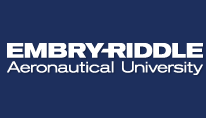T2-E: Experimental Education: Design and Implementation of Nikola Tesla’s Egg of Columbus as an Instructional Aid
Location
Dolphin
Start Date
5-3-2018 1:45 PM
Description
This paper describes the on-going efforts to create a two-phase induction motor to serve as an educational and instructional aid for demonstrating various concepts in physics and electromagnetism for students and visitors to Florida Polytechnic University. Specifically, the mathematical calculations required and design process used to create a functioning two-phase alternating current induction motor similar to the Egg of Columbus (EOC) machine created by Nikola Tesla will be explored. In addition, physical aids may be constructed to demonstrate the fundamental physical and electromagnetic principles supporting the overall function of the induction motor. Further, surveys may be created and distributed among students to gauge the effectiveness of the experiments in comprehension of the fundamental concepts and, thus, effectiveness of the model as an instructional aid. Finally, efforts will be made to ensure this project is scalable, so that future students may expand upon this experiment as deemed necessary.
T2-E: Experimental Education: Design and Implementation of Nikola Tesla’s Egg of Columbus as an Instructional Aid
Dolphin
This paper describes the on-going efforts to create a two-phase induction motor to serve as an educational and instructional aid for demonstrating various concepts in physics and electromagnetism for students and visitors to Florida Polytechnic University. Specifically, the mathematical calculations required and design process used to create a functioning two-phase alternating current induction motor similar to the Egg of Columbus (EOC) machine created by Nikola Tesla will be explored. In addition, physical aids may be constructed to demonstrate the fundamental physical and electromagnetic principles supporting the overall function of the induction motor. Further, surveys may be created and distributed among students to gauge the effectiveness of the experiments in comprehension of the fundamental concepts and, thus, effectiveness of the model as an instructional aid. Finally, efforts will be made to ensure this project is scalable, so that future students may expand upon this experiment as deemed necessary.


